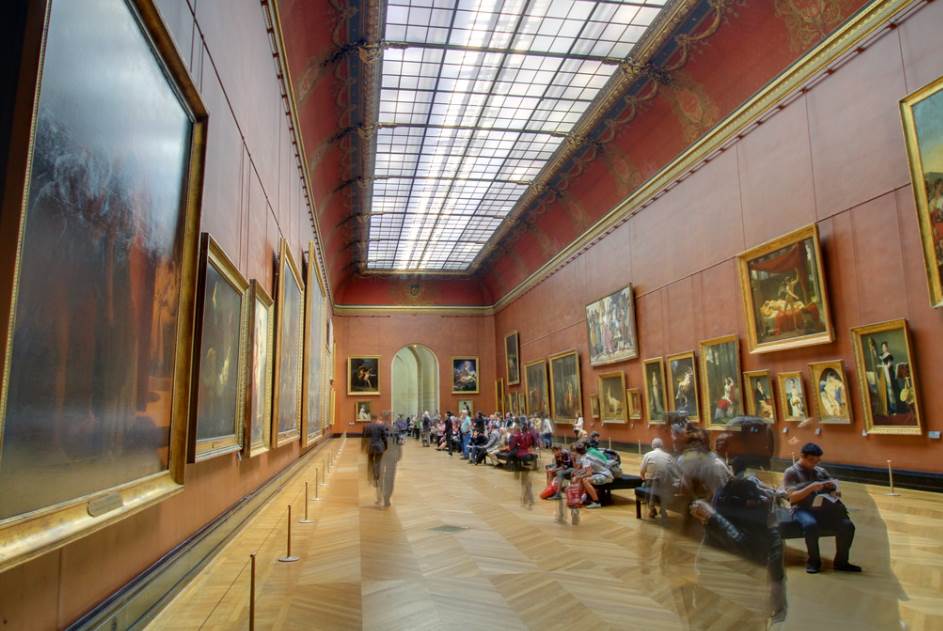A fascinating painting in the oeuvre of a man who is considered to be one of the leading Neoclassical artists of his time combines several artistic styles. This made it a controversial work of art in the early 19th century.
In this article, we’ll take a closer look at some of the most interesting facts about Grande Odalisque by Jean-Auguste-Dominique Ingres, a Neoclassical painting with some remarkable stories to tell.
1. It was completed in an important year in French history
Jean-Auguste-Dominique Ingres (1780-1867) was one of the great Neoclassical artists of the 19th century. He took over the legacy of Jacques-Louis David (1748-1825), the leading French artist of his time whose fascinating oeuvre was heavily influenced by the fall of the Ancien Régime in France.
David first joined the French Revolution and eventually became the personal painter of Napoleon Bonaparte. Many of his paintings were influenced by the events that occurred during this period in history, including “The Death of Marat” (1793) and “The Coronation of Napoleon” (1808).
Ingres studied in the studio of Jacques-Louis David as a young aspiring painter and won the prestigious Grand Prix of Rome in 1802. It’s fair to conclude that his style was heavily influenced by the works of David and he believed that he was a similar history painter than his master.
Grande Odalisque was completed in 1814, the year of the Fall of Napoleon and his first exile to the Island of Elba.
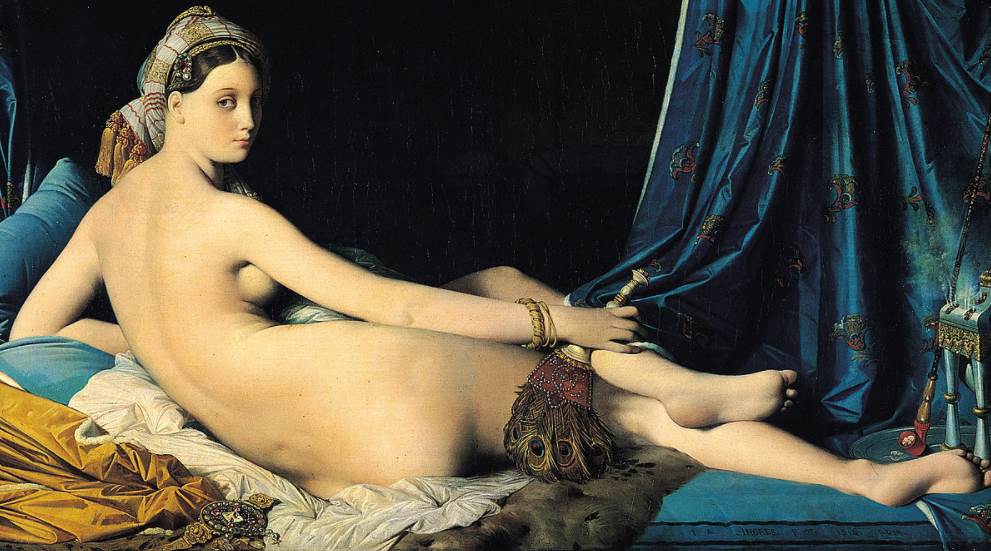
2. It was commissioned by Napoleon’s sister to accompany a now-lost work
The painting was commissioned by Caroline Bonaparte (1782-1839), the younger sister of Napoleon Bonaparte (1769-1821). She met her future husband Joachim Murat (1767-1815) through her infamous brother because he was one of his generals during the Napoleonic Wars.
He became the King of Naples but was later tried for treason and sentenced to death by firing squad following the ultimate fall of Napoleon in 1815.
Maria Annunziata Carolina Murat was Queen Consort of Naples during the reign of her husband. Ingres based it on a painting that she already owned called “La Dormeuse de Naples” or “The Sleeping Woman of Naples.”
This painting is now lost and only a drawing made from memory by Ingres and a picture of a preparatory drawing remain today.
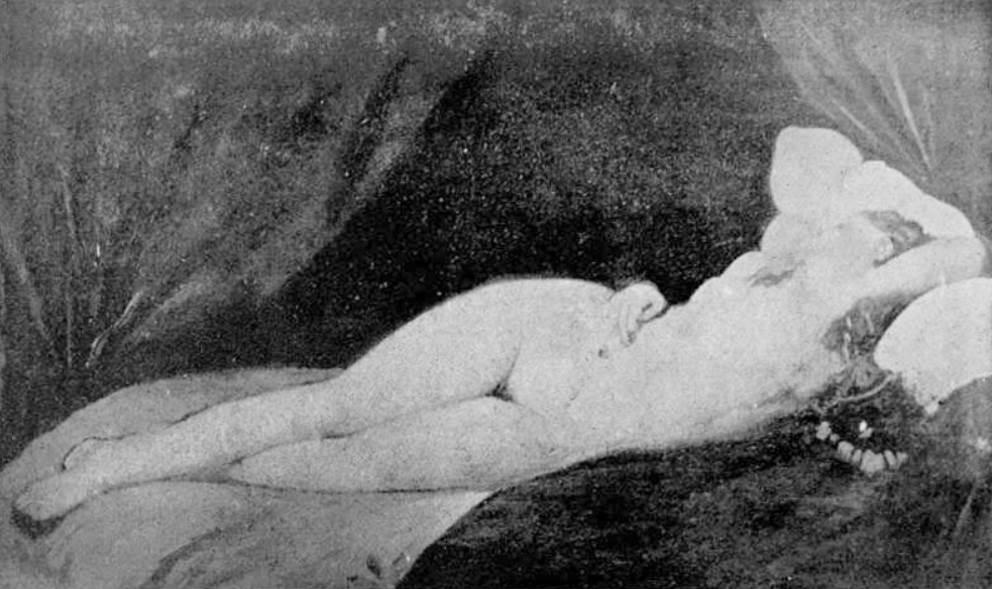
3. Ingres was inspired by a number of other reclining nude female paintings
Reclining nudes weren’t a new concept in the world of art by any means in the early 19th century. Some of the most famous Renaissance artists in history already produced this type of painting in the early 16th century, about 300 years earlier.
Some of the most notable examples are the “Sleeping Venus” (1510) (or Dresden Venus) by Giorgione and the “Venus of Urbino” (1534) by Titian.
Despite being a similar type of painting, the exact position of the woman is different in Grande Odalisque. He back faces the viewer and she looks over her shoulder.
This means that Grande Odalisque can be described as a combination of the two mentioned Renaissance paintings and a work by Jacques-Louis David called “Portrait of Madame Récamier.”
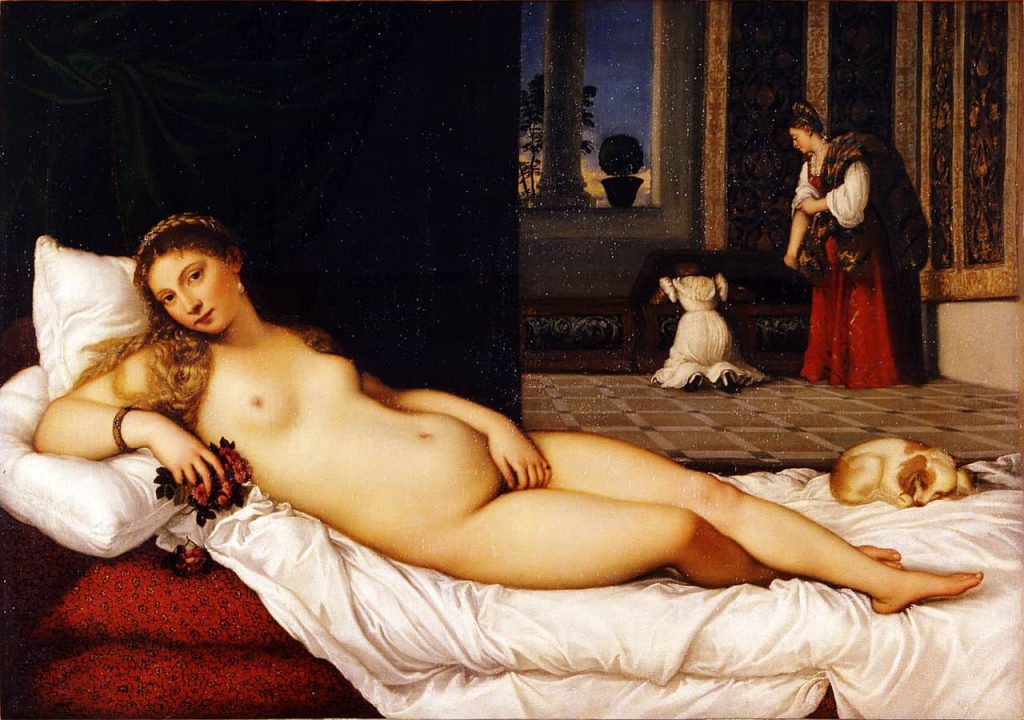
4. The main figure reminds us of a famous Mannerist painting
The longer you look at Grande Odalisque, the more you realize that something is off. The proportions of the woman simply don’t add up because her head is way too small for her body and her limbs are elongated.
Despite considering himself to be a history painter and upholder of the Neoclassical tradition following the rise of the Romantic artists later in the 19th century, this painting leans towards exotic Romanticism.
The lack of exact anatomical proportions also leans toward Mannerist paintings, especially “Madonna with the Long Neck” (1535-1540) by Parmigianino, a famous painting by the artist which features a similar distorted figure.
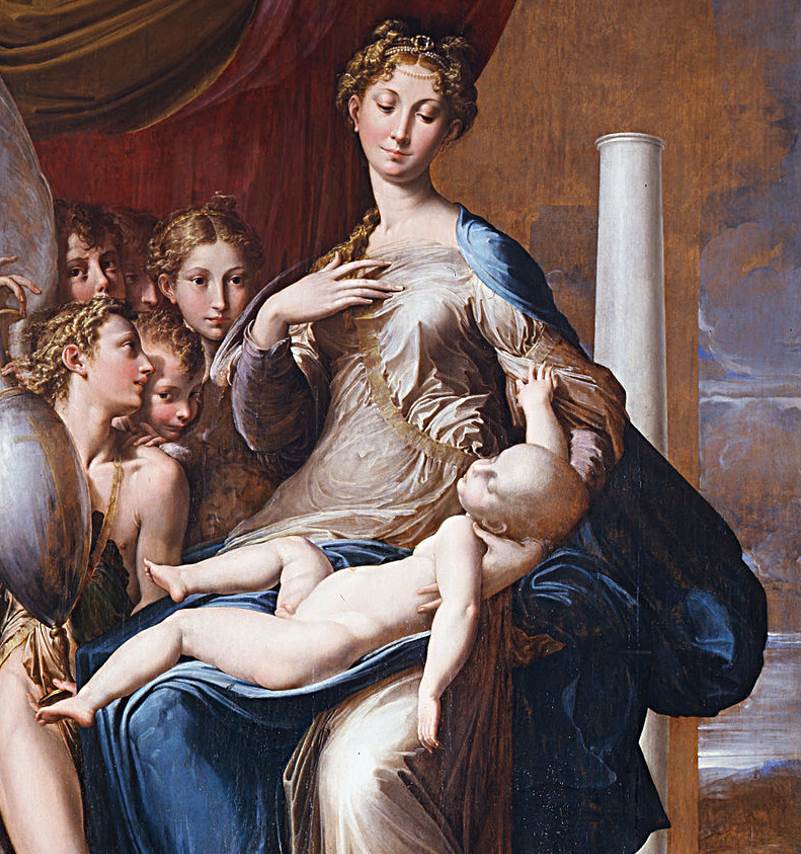
5. It was heavily criticized after being displayed at the Paris Salon
The painting was completed during a turbulent time in history. It was only displayed at the Paris Salon of 1819 and was met with heavy criticism when it was publicly displayed at the most important event in the world of Western art at the time.
It’s remarkable to note that critics at the time didn’t believe that Ingres purposely elongated the body of the reclining female but considered it to be an error on his part.
Today, art historians agree that the impossible to replicate twist of the woman’s body was included deliberately by the artist. The woman has 5 additional vertebrae and the left arm of the Odalisque is shorter than the right.
The cold stare of the woman also didn’t help and therefore a critic remarked:
Neither bones nor muscle, neither blood, nor life, nor relief, indeed nothing that constitutes imitation.
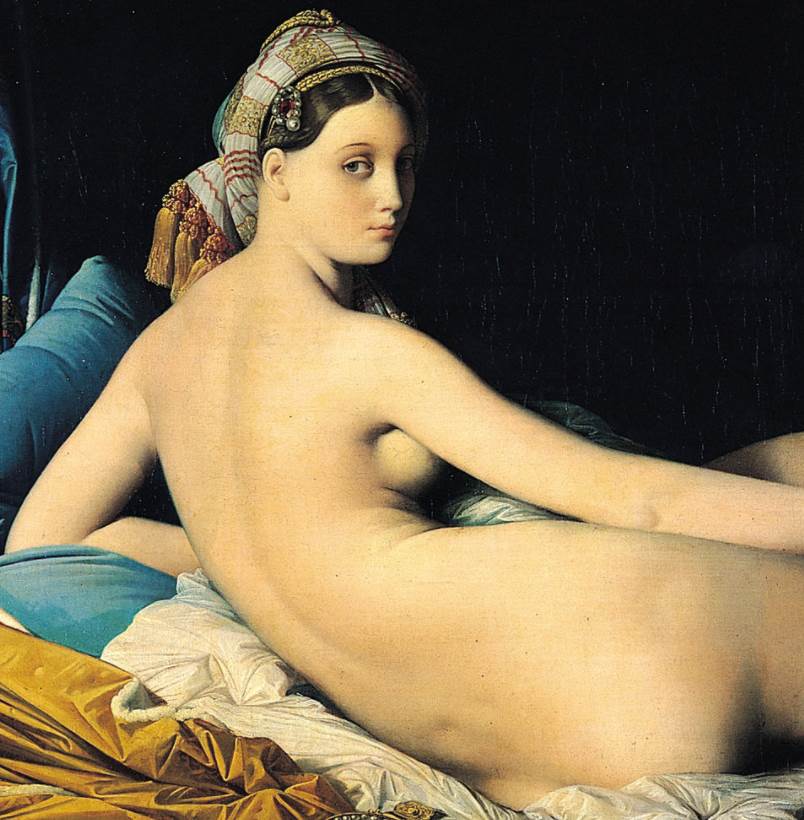
6. The painting inspired the first poster of a NYC-based feminist group
The poignant gaze of the odalisque, a Turkish concubine, inspired an anonymous feminist group called the “Guerrilla Girls.” This group consists of female artists and was established in New York City in the year 1985.
The mission of this group is to bring gender and racial inequality to the attention of the greater art community and try to achieve their goal through a method referred to as “culture jamming.”
The first poster that aimed to bring their cause to the attention of the general public featured Grande Odalisque by Jean-Auguste-Dominique Ingres and is considered to be their most memorable of all.

7. How big is Grande Odalisque by Ingres?
It’s far from being the largest painting in the extensive oeuvre of Jean-Auguste-Dominique Ingres but it’s also not small. It has similar dimensions to other reclining females such as the Venus of Urbino.
This oil on canvas painting has dimensions of 88.9 × 162.56 centimeters (35 × 64 inches).
8. Where is the painting located today?
The painting was purchased by one of the most famous museums in the world, the Louvre Museum in Paris, in 1899.
It has been on display at the Louvre ever since and can be found in Room 702 of the museum. This room is also known as the “Daru Room” and is situated in the Denon Wing of the museum.
This room is dedicated to Neoclassical paintings and also features “Oath of the Horatti” by Jacques-Louis David, one of the best-known works of this art movement.
